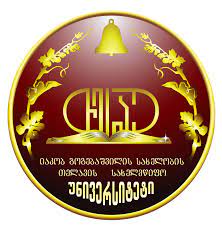მამრობითი სქესის ვერბალური და არავერბალური დისკურსი ანიამაციურ ფილმებში
DOI:
https://doi.org/10.52340/tuw.2022.11საკვანძო სიტყვები:
ანიმაციური ფილმი, ვერბალური დისკურსი, არავერბალური დისკურსი, წუნა და წრუწუნა, დიდი დეტექტივი თაგვიანოტაცია
გენდერულ დისკურსზე (ვერბალური და არავერბალური კომუნიკაცია) დაკვირვება სხვადასხვა სამეცნიერო კვლევის მთავარი საზრუნავია. ვერბალური კომუნიკაცია ემსახურება საკუთარი შეხედულებების, ინფორმაციისა და იდეების გამოხატვას ბგერისა და სიტყვების სახით. სალაპარაკო ენა მოიცავს პირისპირ კომუნიკაციას, ხოლო არავერბალური კომუნიკაცია (ასევე ცნობილია, როგორც ჩუმი ენა) არის შეტყობინებების გადაცემა თვალის კონტაქტის, სახის გამონათქვამების, ჟესტებისა და სივრცითი ურთიერთობის გამომგზავნსა და მიმღებს შორის შეტყობინების გადასაცემად. ბოლოდროინდელი კვლევების საფუძველზე დასტურდება, რომ ქალისა და მამაკაცის ვერბალური და არავერბალური კომუნიკაციის ნიმუშები საკმაოდ განსხვავებულია (Eagly & Johnson, 1990; Kring & Gordon, 1998). ნაშრომის მიზანია დადგინდეს მამრობითი სქესის ანიმაციური გმირების მეტყველება (ვერბალური და არავერბალური) ორი ანიმაციური ფილმის საფუძველზე (ამერიკული ანიმაციური ფილმი– “დიდი დეტექტივი თაგვი” და ქართული ანიმაციური ფილმი – “წუნა და წრუწუნა”). კვლევის დროს გამოყენებულია დაკვირვებისა და თვისებრივი კვლევის მეთოდები, ასევე ტიპოლოგიური ანალიზი.შესაბამისად, კვლევისთვის შერჩეულია ორი ანიმაციური ფილმი (ამერიკული ანიმაციური ფილმი– “დიდი დეტექტივი თაგვი” და ქართული ანიმაციური ფილმი – “წუნა და წრუწუნა”), სადაც მთავარ მოქმედ გმირებად გვევლინებიან თაგვები და ვირთხები.დაკვირვებაზე დაფუძნებულმა კვლევამ გამოავლინა ის ფაქტი, რომ ანიმაციური ფილმების გმირები მოქმედებენ ისევე, როგორც მამრობითი და მდედრობითი სქესის წარმომადგენლები სხვადასხვა სიტუაციებში. ფილმის გმირებზე დაკვირვება გულისხმობს ვერბალური და არავერბალური დისკურსის ღრმა სოციალურ და ენობრივ ანალიზს, რაც გამოიხატება მათ ქმედებებში და ურთიერთდამოკიდებულებაში.
##plugins.generic.usageStats.downloads##
წყაროები
Eagly, A. H. & Johnson, B. T. (1990). Gender and Leadership Style: A meta-analysis. Psychological Bulletin, vol.108, pp.233-256. Retrieved from: http://digitalcommons. uconn.edu/cgi/viewcontent.cgi?article=1010&context=chip_docs
Kring, A. M. & Gordon, A. H. (1998). Sex Differences in Emotion: Expression, Experience and Physiology. Journal of Personality and Social Psychology, vol.74, pp.686-703.
Lippa, R. A. (2005). Gender, nature, and nurture. Mahwah, NJ: Lawrence Erlbaum Associates, Inc
Perry, L. A. M., Turner, L. H., & Sterk, H. M. (1992). Constructing and Reconstructing Gender: The Links among Communication, Language and Gender. Albany: State Univ. of New York Press.
Sweetman.C., (Ed.), (1997), Men and Masculinity, Oxfam Focus on gender
Wodak, R., 2015. Gender and Language: Cultural Concerns. In: James D. Wright (editor-in-chief), International Encyclopedia of the Social & Behavioral Sciences, 2nd edition, Vol 9. Oxford: Elsevier. pp. 698–703. ISBN: 9780080970868






